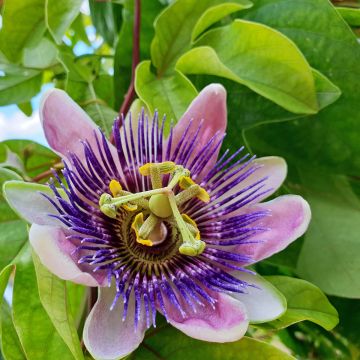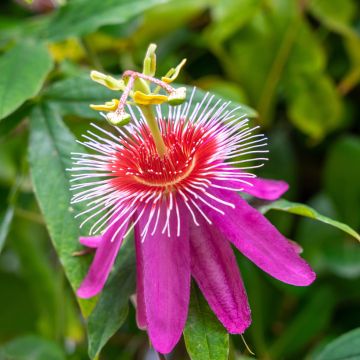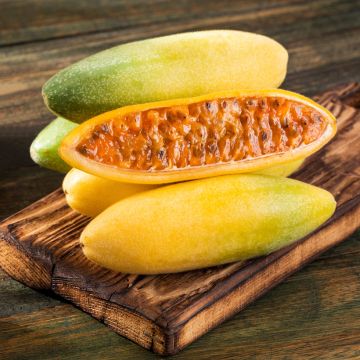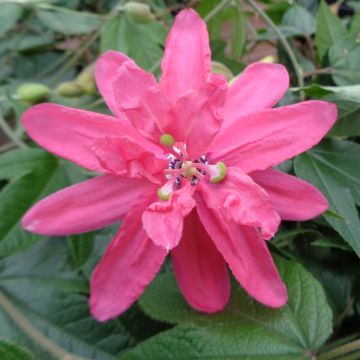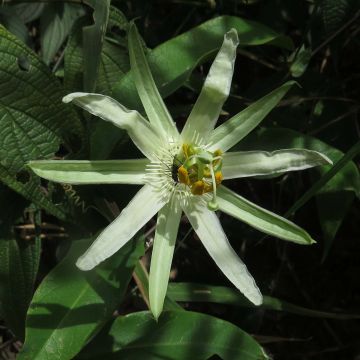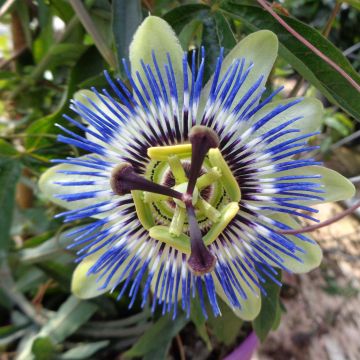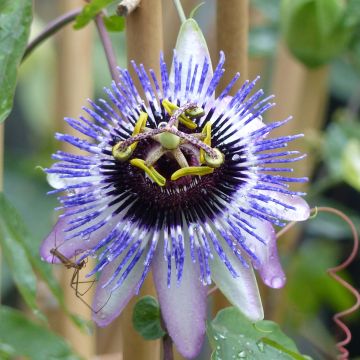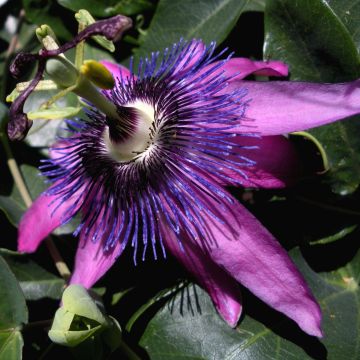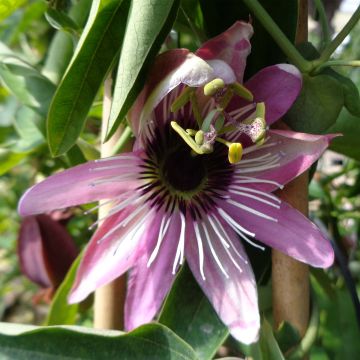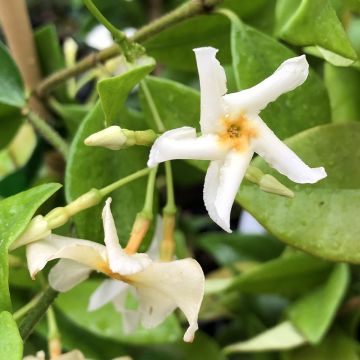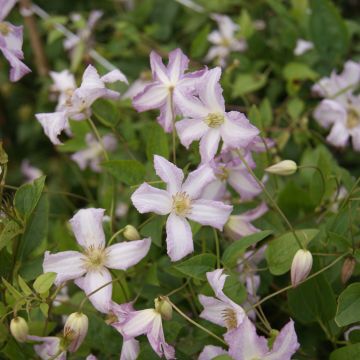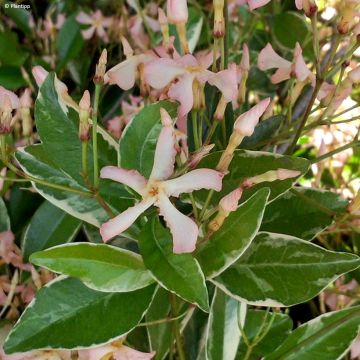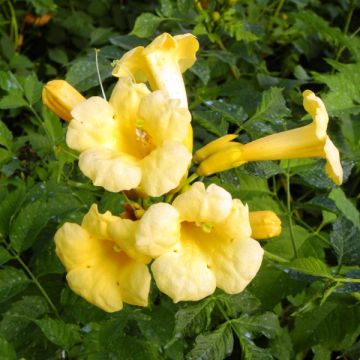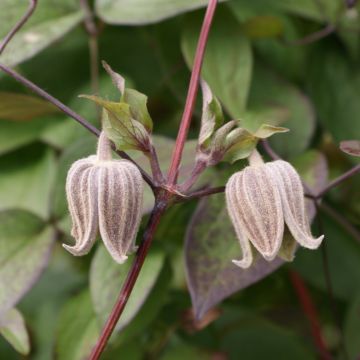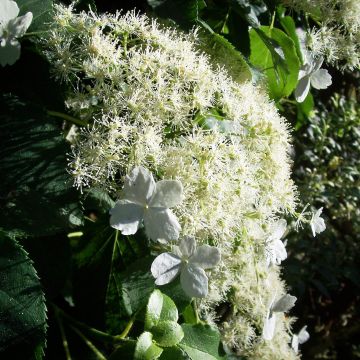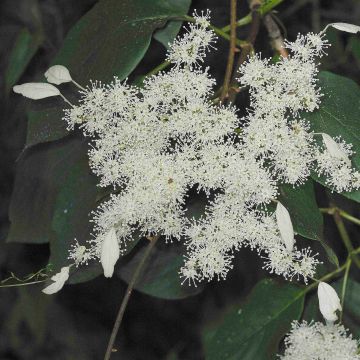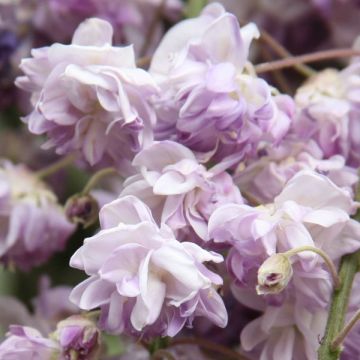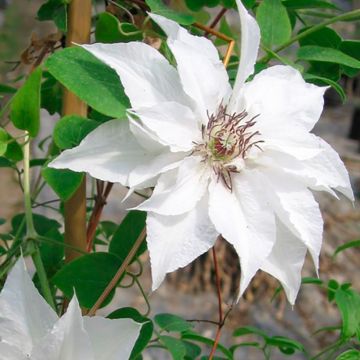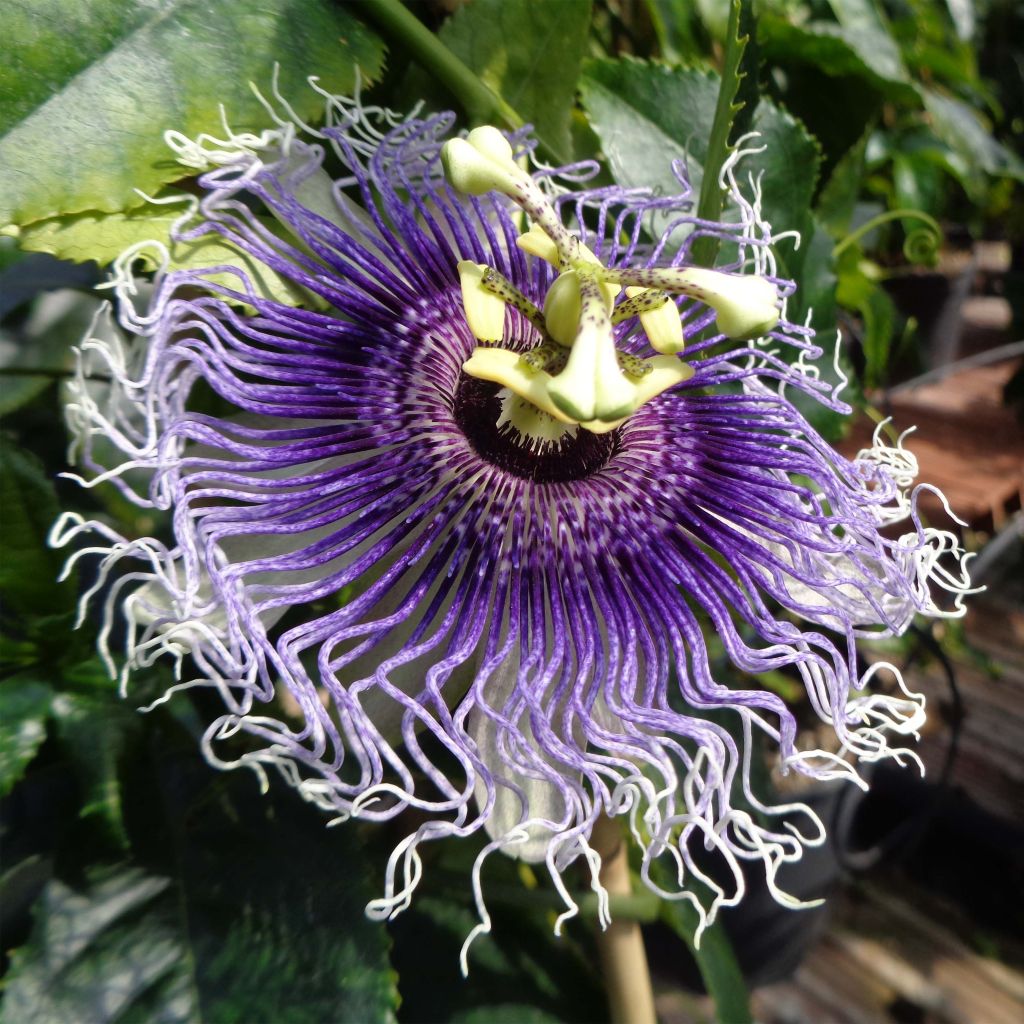

Passiflore Byron Beauty - Fleur de la Passion
Passiflora Byron Beauty- Passion Flower
Passiflora Byron Beauty
Passion Flower, Passion Vines
This item cannot be shipped to the selected country
Delivery charge from €5.90
More information
Schedule delivery date,
and select date in basket
This plant carries a 6 months recovery warranty
More information
We guarantee the quality of our plants for a full growing cycle, and will replace at our expense any plant that fails to recover under normal climatic and planting conditions.
From €5.90 for pickup delivery and €6.90 for home delivery
Express home delivery from €8.90.
Does this plant fit my garden?
Set up your Plantfit profile →
Description
The Passiflora 'Byron Beauty' is a vigorous hybrid passionflower, notable for its improbable, large fringed violet flowers. This variety is highly floriferous and has the advantage of flowering quite early in the year. It forms a 3 to 4m (10 to 13ft) tall climber and is therefore suitable for cultivation in a pot on a terrace, under a veranda, or in the ground wherever temperatures do not drop below 5°C (41°F).
Mostly native to tropical areas of South America, passionflowers belong to the large family of Passifloraceae, which includes 400 species and numerous spontaneous or horticultural hybrids.
'Byron Beauty' is a 1989 hybrid with a complex parentage (the first tetraploid passionflower variety), resulting from a remarkable selection of work by American Dr. Robert Knight. This robust and easy-to-grow climbing plant likes sunny and warm situations, but is sensitive to temperatures below 5°C (41°F). Fortunately, it has a fairly compact growth habit so it will be very happy cultivated in a large pot on a terrace that can be brought indoors in winter. Climbing, it attaches itself to its support using tendrils, reaching 3 to 4m (10 to 13ft). It is characterised by its sturdy stems adorned with leaves divided into 3 pointed and toothed lobes of a shiny dark green colour. Its flowering extends from spring to autumn in the form of large flowers measuring 10 to 12cm (4 to 5in) in diameter that constantly repeat on the plant. These flowers are formed by white sepals and petals, completely covered by a crown of dark violet filaments at their base, gradually becoming pearly white towards their very frizzy tips. Green stamens occupy the centre. They emit a sweet fragrance reminiscent of pansies. Once pollinated (provided there are other passionflowers nearby as this variety is self-sterile), the flowers give way to edible fruits, oval and yellow when ripe, measuring 5cm (2in) in length and without seeds.
This Passion Flower, hardy up to 5°C (41°F) (a well-established plant will tolerate short periods of very light frost) grows in any well-drained, light, fairly deep and not too dry soil, in a sunny and sheltered position. At the end of flowering, pruning consists of reducing the branches to maintain a beautiful habit. With its height of 3 to 4m (10 to 13ft) and generous exotic flowering, the 'Byron Beauty' passionflower is a wonderful plant for dressing up walls, fences, trellises, porches, and pergolas. It is also highly appreciated in verandas, where it will safely pass through cold winters.
Report an error about the product description
Passiflora Byron Beauty- Passion Flower in pictures
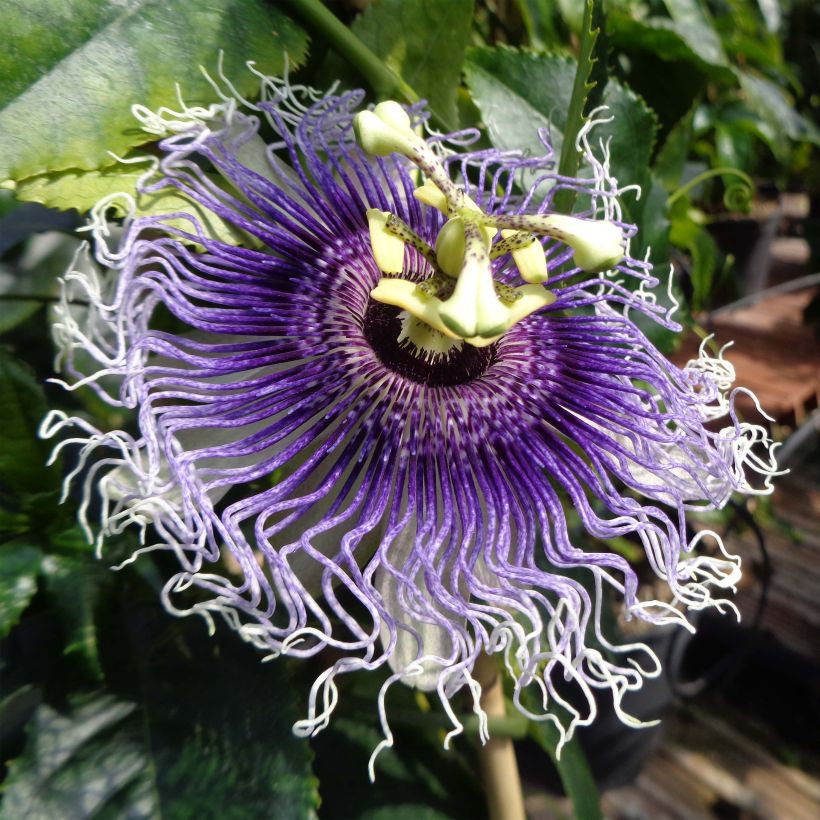

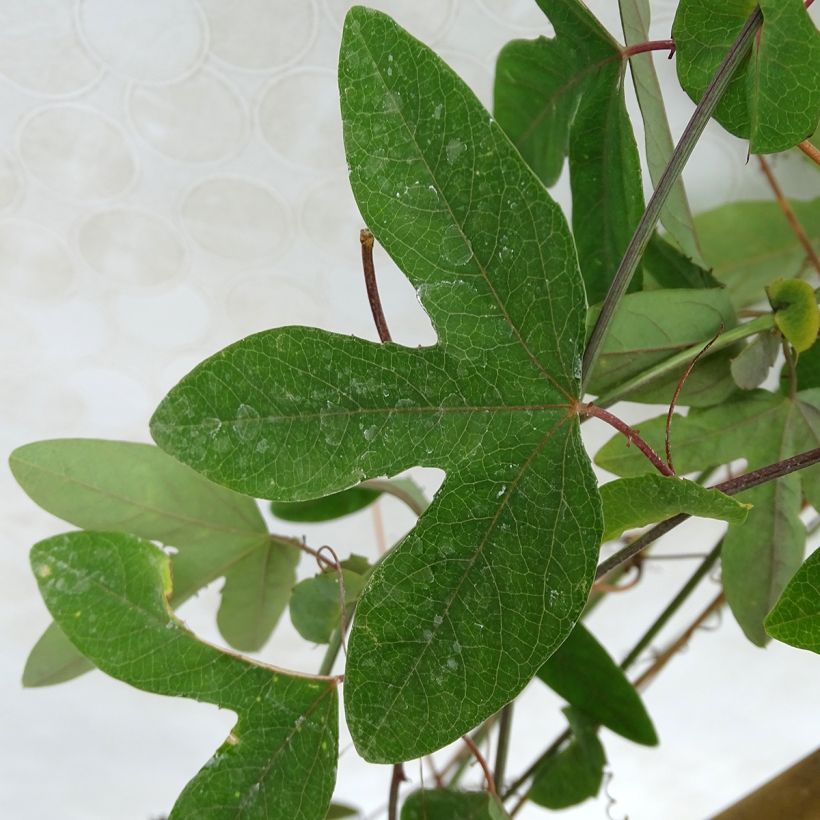

Plant habit
Flowering
Foliage
Botanical data
Passiflora
Byron Beauty
Passifloraceae
Passion Flower, Passion Vines
Cultivar or hybrid
Other Passionflowers
Planting and care
The 'Byron Beauty' passionflower is a sun-loving and heat-loving plant that should be sheltered from cold and drying winds. Plant it in ordinary, deep, well-worked, and well-drained soil. Hardy up to 5°C (41°F) at the stump, it should not be planted in the ground except in a protected location with good winter mulching. Place it on a support to support the weight of vegetation. Guide its branches well onto the support as the growth is exuberant. Pruning before winter is recommended to maintain a reasonable size. Do not hesitate to cut back the main branches to facilitate growth. In early spring, remove dead branches near the stump. Beware of scale insects, whiteflies, and the cucumber mosaic virus. Treat preventively.
Planting period
Intended location
Care
-
, onOrder confirmed
Reply from on Promesse de fleurs
Summer flowering climbers
Haven't found what you were looking for?
Hardiness is the lowest winter temperature a plant can endure without suffering serious damage or even dying. However, hardiness is affected by location (a sheltered area, such as a patio), protection (winter cover) and soil type (hardiness is improved by well-drained soil).

Photo Sharing Terms & Conditions
In order to encourage gardeners to interact and share their experiences, Promesse de fleurs offers various media enabling content to be uploaded onto its Site - in particular via the ‘Photo sharing’ module.
The User agrees to refrain from:
- Posting any content that is illegal, prejudicial, insulting, racist, inciteful to hatred, revisionist, contrary to public decency, that infringes on privacy or on the privacy rights of third parties, in particular the publicity rights of persons and goods, intellectual property rights, or the right to privacy.
- Submitting content on behalf of a third party;
- Impersonate the identity of a third party and/or publish any personal information about a third party;
In general, the User undertakes to refrain from any unethical behaviour.
All Content (in particular text, comments, files, images, photos, videos, creative works, etc.), which may be subject to property or intellectual property rights, image or other private rights, shall remain the property of the User, subject to the limited rights granted by the terms of the licence granted by Promesse de fleurs as stated below. Users are at liberty to publish or not to publish such Content on the Site, notably via the ‘Photo Sharing’ facility, and accept that this Content shall be made public and freely accessible, notably on the Internet.
Users further acknowledge, undertake to have ,and guarantee that they hold all necessary rights and permissions to publish such material on the Site, in particular with regard to the legislation in force pertaining to any privacy, property, intellectual property, image, or contractual rights, or rights of any other nature. By publishing such Content on the Site, Users acknowledge accepting full liability as publishers of the Content within the meaning of the law, and grant Promesse de fleurs, free of charge, an inclusive, worldwide licence for the said Content for the entire duration of its publication, including all reproduction, representation, up/downloading, displaying, performing, transmission, and storage rights.
Users also grant permission for their name to be linked to the Content and accept that this link may not always be made available.
By engaging in posting material, Users consent to their Content becoming automatically accessible on the Internet, in particular on other sites and/or blogs and/or web pages of the Promesse de fleurs site, including in particular social pages and the Promesse de fleurs catalogue.
Users may secure the removal of entrusted content free of charge by issuing a simple request via our contact form.
The flowering period indicated on our website applies to countries and regions located in USDA zone 8 (France, the United Kingdom, Ireland, the Netherlands, etc.)
It will vary according to where you live:
- In zones 9 to 10 (Italy, Spain, Greece, etc.), flowering will occur about 2 to 4 weeks earlier.
- In zones 6 to 7 (Germany, Poland, Slovenia, and lower mountainous regions), flowering will be delayed by 2 to 3 weeks.
- In zone 5 (Central Europe, Scandinavia), blooming will be delayed by 3 to 5 weeks.
In temperate climates, pruning of spring-flowering shrubs (forsythia, spireas, etc.) should be done just after flowering.
Pruning of summer-flowering shrubs (Indian Lilac, Perovskia, etc.) can be done in winter or spring.
In cold regions as well as with frost-sensitive plants, avoid pruning too early when severe frosts may still occur.
The planting period indicated on our website applies to countries and regions located in USDA zone 8 (France, United Kingdom, Ireland, Netherlands).
It will vary according to where you live:
- In Mediterranean zones (Marseille, Madrid, Milan, etc.), autumn and winter are the best planting periods.
- In continental zones (Strasbourg, Munich, Vienna, etc.), delay planting by 2 to 3 weeks in spring and bring it forward by 2 to 4 weeks in autumn.
- In mountainous regions (the Alps, Pyrenees, Carpathians, etc.), it is best to plant in late spring (May-June) or late summer (August-September).
The harvesting period indicated on our website applies to countries and regions in USDA zone 8 (France, England, Ireland, the Netherlands).
In colder areas (Scandinavia, Poland, Austria...) fruit and vegetable harvests are likely to be delayed by 3-4 weeks.
In warmer areas (Italy, Spain, Greece, etc.), harvesting will probably take place earlier, depending on weather conditions.
The sowing periods indicated on our website apply to countries and regions within USDA Zone 8 (France, UK, Ireland, Netherlands).
In colder areas (Scandinavia, Poland, Austria...), delay any outdoor sowing by 3-4 weeks, or sow under glass.
In warmer climes (Italy, Spain, Greece, etc.), bring outdoor sowing forward by a few weeks.

































